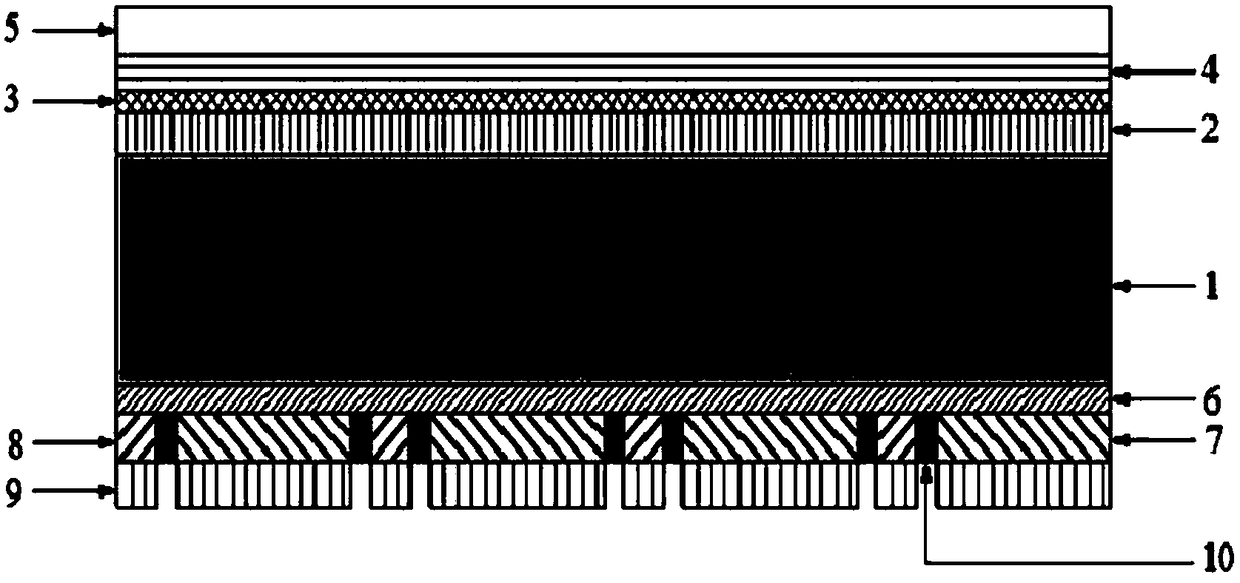Interdigital back contact heterojunction monocrystal battery
A monocrystalline silicon battery and interdigitated back contact technology, which is applied in the field of solar cells, can solve the problems of high photogenerated carrier generation rate, difficulty in forming photogenerated current, and difficult cell conversion efficiency, so as to improve photoelectric conversion efficiency and reduce surface defects. The effect of low density and excellent interface passivation effect
- Summary
- Abstract
- Description
- Claims
- Application Information
AI Technical Summary
Problems solved by technology
Method used
Image
Examples
Embodiment Construction
[0025] The technical solutions in the embodiments of the present invention will be described in detail below in conjunction with the accompanying drawings in the embodiments of the present invention. Obviously, the described embodiments are only some examples of the present invention, not all embodiments. Based on the embodiments of the present invention, all other embodiments obtained by persons of ordinary skill in the art without making creative efforts belong to the protection scope of the present invention.
[0026] see figure 1 , is an interdigitated back-contact heterojunction monocrystalline silicon cell according to an embodiment of the present invention, and the monocrystalline silicon cell includes an N-type monocrystalline silicon substrate 1, wherein the N-type monocrystalline silicon substrate 1 has an opposite Front side and a back side; one side lightly doped N + Layer 2, amorphous silicon oxygen alloy (a-SiOx:H) front passivation layer 3, front N-type amorpho...
PUM
| Property | Measurement | Unit |
|---|---|---|
| Thickness | aaaaa | aaaaa |
| Thickness | aaaaa | aaaaa |
Abstract
Description
Claims
Application Information
 Login to View More
Login to View More - R&D
- Intellectual Property
- Life Sciences
- Materials
- Tech Scout
- Unparalleled Data Quality
- Higher Quality Content
- 60% Fewer Hallucinations
Browse by: Latest US Patents, China's latest patents, Technical Efficacy Thesaurus, Application Domain, Technology Topic, Popular Technical Reports.
© 2025 PatSnap. All rights reserved.Legal|Privacy policy|Modern Slavery Act Transparency Statement|Sitemap|About US| Contact US: help@patsnap.com

